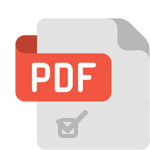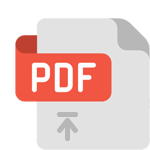Submissions
Submission Preparation Checklist
As part of the submission process, authors are required to check off their submission's compliance with all the following items. Submissions may be returned to authors that do not adhere to these guidelines.
- This submission meets the requirements outlined in the Author Guidelines.
- This submission has not been previously published, nor is it before another journal for consideration.
- All references have been checked for accuracy and completeness.
- All tables and figures have been numbered and labeled.
- Permission has been obtained to publish all photos, datasets and other material provided with this submission.
Research Article
A research article reports the results of original research, and assesses its contribution to the body of knowledge in a given area.
Review
The review is a text of a scholarly paper, which includes the current knowledge including substantive findings, as well as theoretical and methodological contributions to a particular topic. Literature reviews are secondary sources and do not report new or original experimental work. Most often associated with academic-oriented literature, such reviews are found in academic journals and are not to be confused with book reviews that may also appear in the same publication.
Short Communication
Short communications are publications with up to about four pages in size and reporting a result likely of impact on the future research in the respective field. Short communications are publications with up to about four page in size and reporting a result likely of impact on the future research in the respective field. Authors are encouraged to submit an extended version of the paper at a later stage.
Copyright Notice
Authors who publish with this journal agree to the following terms:
- Authors retain copyright and grant the journal right of first publication with the work simultaneously licensed under a Attribution-ShareAlike 4.0 International (CC BY-SA 4.0) License that allows others to share the work with an acknowledgment of the work's authorship and initial publication in this journal.
- Authors are able to enter into separate, additional contractual arrangements for the non-exclusive distribution of the journal's published version of the work (e.g., post it to an institutional repository or publish it in a book), with an acknowledgment of its initial publication in this journal.
- Authors are permitted and encouraged to post their work online (e.g., in institutional repositories or on their website) before and during the submission process, as it can lead to productive exchanges, as well as earlier and greater citation of published work (See The Effect of Open Access).
Privacy Statement
KEDJATI Journal of Islamic Civilization is a peer-reviewed international journal, available in print and online and published two times a year. This statement clarifies ethical behaviour of all parties involved in the act of publishing an article in this journal, including the author, the chief editor, the Editorial Board, the peer-reviewer and the publisher (KEDJATI Foundation). This statement is based on COPE Best Practice Guidelines for Journal Editors.














